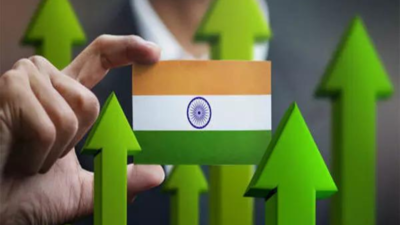ARTICLE AD BOX

MUMBAI: Rating agency ICRA has reversed its earlier GDP growth downgrade, citing the consumption lift from sharp and unexpected GST rate cuts. The agency said the move, along with income-tax relief, has put Rs 3 lakh crore in the hands of households this year and will boost credit growth and credit quality for banks and NBFCs.“The GST rate cuts were unexpected and implemented very quickly,” said Aditi Nayar, chief economist, ICRA. “We had cut our FY25 growth forecast from 6.5% to 6.2% and then to 6% because of tariff hikes and weaker exports. With this consumption stimulus, we are back at 6.5%.”Nayar added that the GST tax relief and the relief on income taxes earlier, combined with the likelihood of an RBI rate cut later this year, would provide further support to demand.On banks, Anil Gupta, senior vice-president, ICRA, said higher disposable incomes will drive retail loan demand and keep asset quality steady. “It is hard to say how much of the additional income will go toward repaying debt and how much toward consumption. If consumption improves, corporate investment may also pick up,” he said.Gupta noted that while bank margins are under pressure from deposit repricing, stronger credit growth and steady asset quality will offset much of the impact.
“Legacy NPAs are being written off or upgraded, and we do not expect a significant deterioration in credit quality,” he said.For NBFCs, the demand boost could ease risks in unsecured and microfinance portfolios, said AM Karthik, senior vice-president, ICRA. “Unsecured loans had grown very sharply, drawing regulatory caution. Now, tax-led consumption will support vehicles and housing, leading to a more balanced growth mix,” he said.ICRA projects incremental bank credit to rise to Rs 19-20.5 lakh crore in FY26 from Rs 18 lakh crore in FY25, translating into 10.4-11.3% growth, against 10.9% in FY25 and 16.3% in FY24. NBFC credit, excluding infra-focused entities, is seen expanding 15-17% in FY26, compared with 17% in FY25 and 24% in FY24.Though incremental bank credit growth has slowed to Rs 3.9 lakh crore in Apr-Aug FY26 from Rs 5.1 lakh crore a year earlier, ICRA expects GST rationalisation and the CRR cut to spur demand.
Ample liquidity and easing credit-to-deposit ratios will also support banks’ competitive positioning against debt markets, it said.Asset quality stress in retail and MSME segments has weighed on private banks and NBFCs, but ICRA expects an improvement with the GST-driven consumption lift. Even so, it warned that loans to MSMEs and unsecured personal loans—17% of overall non-food bank credit of Rs 184 lakh crore as of July—remain vulnerable to shocks from weak exports or geopolitical risks.
NBFC exposure is higher, with small business and unsecured loans making up 34% of their Rs 35 lakh crore book as of March 2025.“We expect the credit cost of banks and NBFCs to rise by about 13 bps and 30 bps, respectively, with the impact more pronounced in non-housing segments,” said Karthik.ICRA maintains a stable outlook on banks and NBFCs, barring microfinance, where the view is negative. It flagged that smaller NBFCs with low capital buffers and higher borrower overdues face elevated risks, given their limited ability to refinance or raise equity.



.png)
.png)
.png)
















 2 hours ago
2
2 hours ago
2







 English (US) ·
English (US) ·